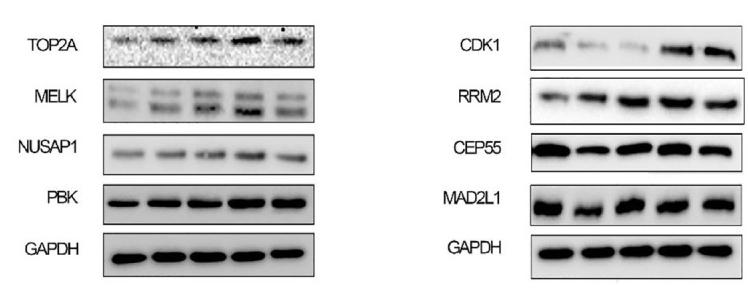MAD2L1 Antibody - #DF6562
製品説明
*The optimal dilutions should be determined by the end user.
*Tips:
WB: For western blot detection of denatured protein samples. IHC: For immunohistochemical detection of paraffin sections (IHC-p) or frozen sections (IHC-f) of tissue samples. IF/ICC: For immunofluorescence detection of cell samples. ELISA(peptide): For ELISA detection of antigenic peptide.
引用形式: Affinity Biosciences Cat# DF6562, RRID:AB_2838524.
折りたたみ/展開
HsMAD2; MAD 2; MAD2 like 1; MAD2 mitotic arrest deficient like 1; MAD2-like protein 1; Mad2l1; MD2L1_HUMAN; Mitotic arrest deficient 2-like protein 1; Mitotic spindle assembly checkpoint protein MAD2A; REV7;
免疫原
A synthesized peptide derived from human MAD2L1, corresponding to a region within the internal amino acids.
- Q13257 MD2L1_HUMAN:
- Protein BLAST With
- NCBI/
- ExPASy/
- Uniprot
MALQLSREQGITLRGSAEIVAEFFSFGINSILYQRGIYPSETFTRVQKYGLTLLVTTDLELIKYLNNVVEQLKDWLYKCSVQKLVVVISNIESGEVLERWQFDIECDKTAKDDSAPREKSQKAIQDEIRSVIRQITATVTFLPLLEVSCSFDLLIYTDKDLVVPEKWEESGPQFITNSEEVRLRSFTTTIHKVNSMVAYKIPVND
種類予測
Score>80(red) has high confidence and is suggested to be used for WB detection. *The prediction model is mainly based on the alignment of immunogen sequences, the results are for reference only, not as the basis of quality assurance.
High(score>80) Medium(80>score>50) Low(score<50) No confidence
研究背景
Component of the spindle-assembly checkpoint that prevents the onset of anaphase until all chromosomes are properly aligned at the metaphase plate. Required for the execution of the mitotic checkpoint which monitors the process of kinetochore-spindle attachment and inhibits the activity of the anaphase promoting complex by sequestering CDC20 until all chromosomes are aligned at the metaphase plate.
Phosphorylated on multiple serine residues. The level of phosphorylation varies during the cell cycle and is highest during mitosis. Phosphorylation abolishes interaction with MAD1L1 and reduces interaction with CDC20. Phosphorylated by NEK2.
Nucleus. Chromosome>Centromere>Kinetochore. Cytoplasm. Cytoplasm>Cytoskeleton>Spindle pole.
Note: Recruited by MAD1L1 to unattached kinetochores (Probable). Recruited to the nuclear pore complex by TPR during interphase. Recruited to kinetochores in late prometaphase after BUB1, CENPF, BUB1B and CENPE. Kinetochore association requires the presence of NEK2. Kinetochore association is repressed by UBD.
The protein has two highly different native conformations, an inactive open conformation that cannot bind CDC20 and that predominates in cytosolic monomers, and an active closed conformation. The protein in the closed conformation preferentially dimerizes with another molecule in the open conformation, but can also form a dimer with a molecule in the closed conformation. Formation of a heterotetrameric core complex containing two molecules of MAD1L1 and of MAD2L1 in the closed conformation promotes binding of another molecule of MAD2L1 in the open conformation and the conversion of the open to the closed form, and thereby promotes interaction with CDC20.
Belongs to the MAD2 family.
研究領域
· Cellular Processes > Cell growth and death > Cell cycle. (View pathway)
· Cellular Processes > Cell growth and death > Oocyte meiosis. (View pathway)
· Human Diseases > Infectious diseases: Viral > HTLV-I infection.
· Organismal Systems > Endocrine system > Progesterone-mediated oocyte maturation.
参考文献
Application: WB Species: Human Sample: breast cancer tissue
Restrictive clause
Affinity Biosciences tests all products strictly. Citations are provided as a resource for additional applications that have not been validated by Affinity Biosciences. Please choose the appropriate format for each application and consult Materials and Methods sections for additional details about the use of any product in these publications.
For Research Use Only.
Not for use in diagnostic or therapeutic procedures. Not for resale. Not for distribution without written consent. Affinity Biosciences will not be held responsible for patent infringement or other violations that may occur with the use of our products. Affinity Biosciences, Affinity Biosciences Logo and all other trademarks are the property of Affinity Biosciences LTD.



